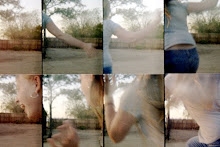When you think about really neat or beautiful clouds, cumulus always comes to mind--those big poofy epic-looking ones before a storm. But without those high level, wispy cirrus clouds in the atmosphere you'd never get incredible optical phenomena such as halos, fire rainbows, light pillars, sun dogs, and a "circumzenithal arc" known as the Bravais' arc. Cirrus clouds are made of plate-shaped ice crystals high in the atmosphere that are formed when water vapour freezes at above 26,000 feet. They are so thin because of how sparse the moisture at that altitude. These clouds are the perfect medium for the refraction of light to make amazing sights in the sky.
There are a great many halos and arcs of varying degrees that can occur in different circumstances, with different angles, latitudes, times of day, and even light sources. There is a name for every possible optical phenomenon ever recorded.
Circumhorizontal arcs, or "fire rainbows" for example, are ice-halos, whole or in part, formed by the crystals in cirrus clouds. These halos don't occur unless the sun is very high in the sky. Latitude also plays a part in the ability to see them--these halos are impossible to see above 55° north or below 55° south. Around the summer solstice it is visible for a greater or lesser time depending on location. In Los Angeles, California the slot of visibility is much greater than say, London, England.
Parhelia, or "sun dogs" are mock suns that appear on either side of the sun, generally seen when the sky is low. Often they appear so bright they can easily be mistaken for the real sun. They always stay at the same altitude as the sun, and are red-coloured nearest the sun. They are always aligned, and often visibly merge into the "parhelic circle," which is a horizontal arc through the sun often seen in similar conditions.
Light pillars are formed by the reflection of light from ice crystals with near horizontal parallel planar surfaces. What? Just another angle of light dispersion in a vertical line above (or occasionally below) the light source, be it the sun, moon, or even streetlights.
Circumzenithal arcs look somewhat like inverted rainbows but again are caused by the refraction of light through ice crystals rather than that of raindrops.
Each of these kinds of phenomena need certain conditions to appear, and probably you will never see two the same.

No comments:
Post a Comment